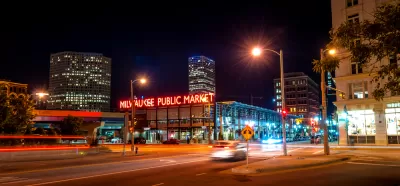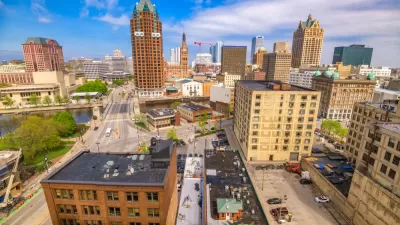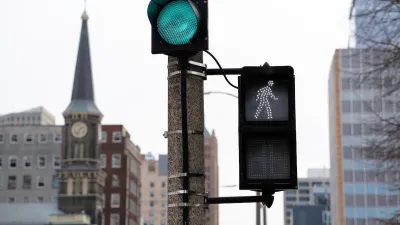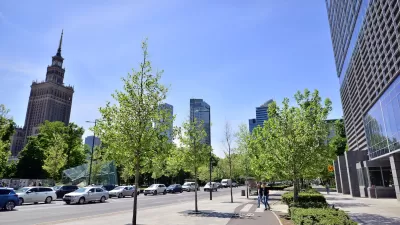The city is using restriping, delineators, and other traffic calming measures to fight reckless driving and improve pedestrian safety.

As Jeramey Jannene reports, Milwaukee's Department of Public Works tested three traffic calming improvements in 2021 as "part of a growing effort by the City of Milwaukee to use infrastructure to prevent or deter reckless driving," which some experts have called a public health epidemic.
The projects, which cost the city $300,000, included curb extensions, delineators, and high-visibility crosswalks on three corridors and are intended to test the effectiveness of the various strategies. The traffic calming initiatives reduce the distance pedestrians need to cross and prevent drivers from passing in non-driving lanes.
"The three paint-and-post projects build on five 2020 projects that included lane restriping, paint-and-post treatments and other reconfigurations. One 2020 project, N. 27th St., was already upgraded to include one-ton planters atop the painted curb extensions," according to the article. The city plans to use $3.8 million in funding from the American Rescue Plan to implement 16 similar projects next year, following Acting Mayor Cavalier Johnson's pledge to address reckless driving as a public health crisis.
FULL STORY: Three Projects Test Traffic Calming

Trump Administration Could Effectively End Housing Voucher Program
Federal officials are eyeing major cuts to the Section 8 program that helps millions of low-income households pay rent.

Planetizen Federal Action Tracker
A weekly monitor of how Trump’s orders and actions are impacting planners and planning in America.

Ken Jennings Launches Transit Web Series
The Jeopardy champ wants you to ride public transit.

‘Minnesota Nice’ Isn’t so Nice When You Can’t Find a Place to Live
The Economic Development and Housing Challenge Program can help address the scourge of homelessness among Indigenous people.

NYC Open Streets Organizers Call for City Support
The number of open streets projects has dropped year after year as volunteer groups struggle to fund and staff them.

Crime Continues to Drop on Philly, San Francisco Transit Systems
SEPTA and BART both saw significant declines in violent crime in the first quarter of 2025.
Urban Design for Planners 1: Software Tools
This six-course series explores essential urban design concepts using open source software and equips planners with the tools they need to participate fully in the urban design process.
Planning for Universal Design
Learn the tools for implementing Universal Design in planning regulations.
Heyer Gruel & Associates PA
Ada County Highway District
Institute for Housing and Urban Development Studies (IHS)
City of Grandview
Harvard GSD Executive Education
Toledo-Lucas County Plan Commissions
Salt Lake City
NYU Wagner Graduate School of Public Service





























